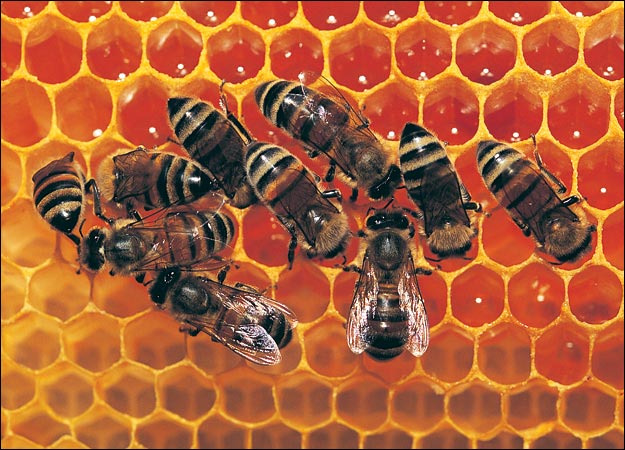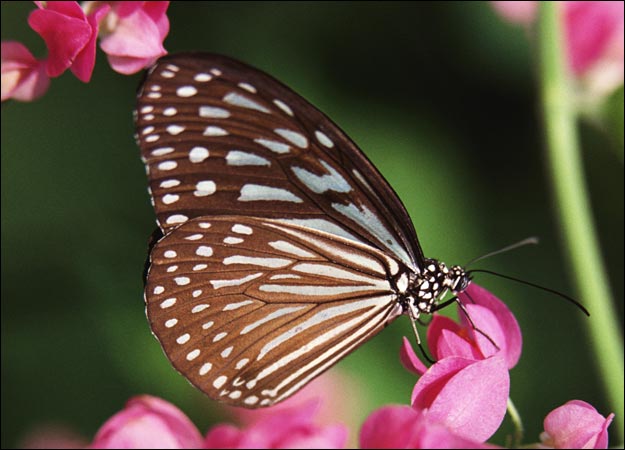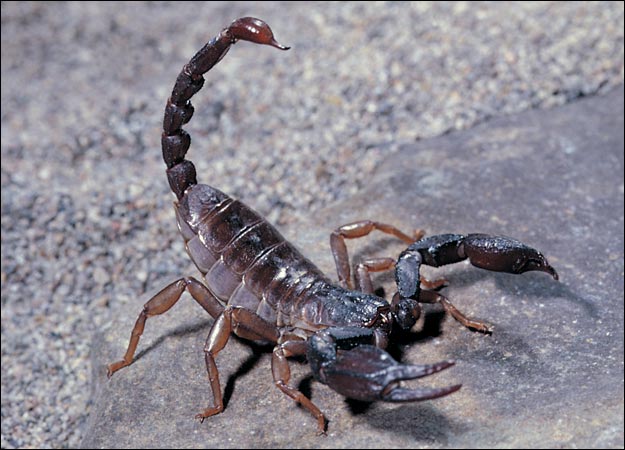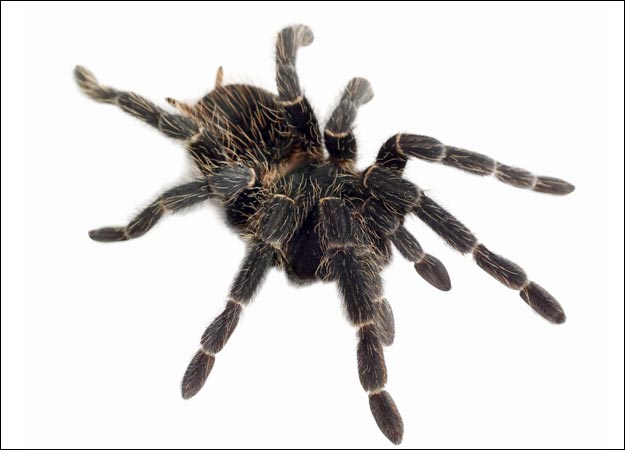Bee Useful Insects: Where would we be without bees, aka "the world's most useful insect"? For such tiny creatures, measuring only 1/8" to 1 inch in length, bees do the heavy lifting of providing honey, wax and pollinating most of the world's plants. Females carry their honey load in a "basket" located on their hind legs. Complex Communities: Honey and bumble bees live in complex communities consisting of a queen, males and sterile females. While the honey bee constructs a home of individual wax cells to raise their young, the bumble bee uses grass and wax to create a home.A Furry Body: A body covered by fur enables bees to continue their daily rounds of pollination on cooler days. |  |
ButterflyButterflies 101: A whopping 165,000 species grouped in 127 families make butterflies and moths one of the most diverse insects in the world. Common features among the array of species are a scale-covered body and wings, a mouth in the form of a proboscis, an elongated appendage used for sipping nectar, and the transformation from caterpillar to butterfly or moth through metamorphosis. Moth or Butterfly?: There is no clear-cut difference between moths and butterflies, and scientists have yet to make a definitive distinction. In general, butterflies tend to be brighter in color and fly in the day, while the drab moth makes its rounds at night. |  |
Scorpion Scorpion Anatomy: As part of the arachnid class, scorpions have two main body segments and four pairs of legs. The most distinctive characteristics of the scorpion are its long, clawlike pedipalps, which look like miniature lobster claws, and their stinging tail. The tail is mainly used for defense as opposed to capturing prey. Diminutive But Deadly: One of the smallest scorpions, the buthid, which rarely reach more than 5 inches in length, is actually one of the most lethal scorpions. One shot of venom from its stinging tail can paralyze the heart and respiratory system of its victim.The Larger Variety: The scorpionid family includes the world's largest scorpions, which can measure up to 8-½ inches long. These larger species tend to be less venomous and use their size to overpower victims instead.Scorpion Survivors: Scorpions are hardy survivors. Scientists have frozen them solid, only to watch them thaw out and keep on crawling. One thing scorpions can't survive without is loose soil in which to burrow. |  |
Spider The Spider's Silk: As part of the arachnid class spiders have two main body segments: the cephalothorax and abdomen. Their ability to produce silk separates spiders from other arachnids. The silk is used to capture prey in elaborately woven webs, to wrap and protect eggs, and as a bungee-like cord to move from place to place. Toxin Toolkit: Almost all spiders have venom-injecting fangs, which they use to kill their prey. Some spiders inject a neurotoxin, which affects the victim's nervous system, typically resulting in paralysis. Others inject a cytotoxin, which damages the victim's cellular tissue.An Extra Set of Hands: Two leglike pedipalps located near the spider's head are used in a variety of ways. One of the most important is bringing food to the mouth. In adult males, the ends of the pedipalps are modified and used for the transfer of sperm during mating. Spiders also use their pedipalps for sensing their environment; sensitive hairs pick up vibrations, air currents and even scent.Spiders, Spiders Everywhere: At least 40,000 species of spider have been described by science, but this number only accounts for one-third to one-fifth of all spider species on earth. Spiders can be found in just about every terrestrial habitat and some water ones as well, from tropical rain forests, woodlands, caves and gardens to your home.Sacrificial Males: A female spider will often kill the male shortly after mating. By feeding the female, who will ultimately lay and tend the resulting fertilized eggs, the male ensures that his genes will carry on. In lieu of self-sacrifice, some male spiders will offer a fly or other meal to the female before mating. |  |